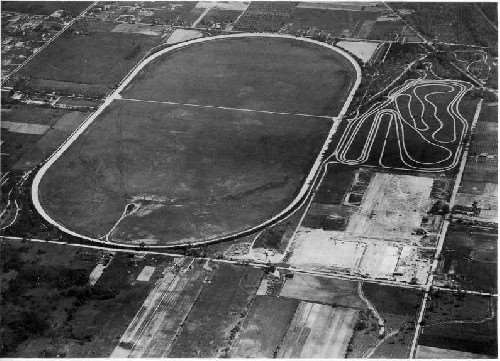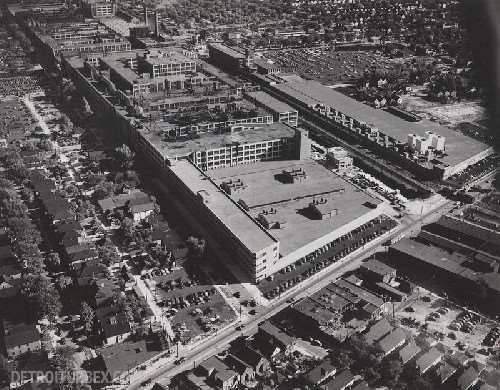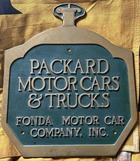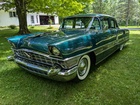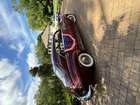|
Re: One Story Assembly Plant What If?
|
||||
|---|---|---|---|---|
|
Webmaster
|
Quote:
Profit and Loss
Posted on: 2010/10/2 13:03
|
|||
|
-BigKev
1954 Packard Clipper Deluxe Touring Sedan -> Registry | Project Blog 1937 Packard 115-C Convertible Coupe -> Registry | Project Blog |
||||
|
||||
|
Re: One Story Assembly Plant What If?
|
||||
|---|---|---|---|---|
|
Home away from home

|
The 1953 or 1954 Annual Report shows Packards and Packard Clippers coming down the dual assembly line.
Posted on: 2010/10/2 15:48
|
|||
|
||||
|
Re: One Story Assembly Plant What If?
|
||||
|---|---|---|---|---|
|
Home away from home
|
I think one of the benefits Packard saw at the time of the conversion Utica to engine and transmission production was that it would allow them to install the all-new machinery, virtually none of which would work on the older in-line engines, and yet would not disturb the ongoing production of engines for the 1953-1954 models.
One reason that I don't see selling Utica to GM as a viable option is that you would be giving the auto industry's 800 pound gorilla a front row seat that fronted right on your sole development and testing facility. Oops... I don't think Nance or Graves would ever let that happen.
Posted on: 2014/5/14 16:42
|
|||
|
||||
|
Re: One Story Assembly Plant What If?
|
||||
|---|---|---|---|---|
|
Home away from home

|
I don't see any inherent defect in a multi-story manufacturing plant. Single level plants are cheaper to build and tear down. The Packard plant had no rail access, was surrounded by urban residential, and was limited in capacity. And of course Packard stopped building bodies there. So eventually a new plant somewhere would be required for the business plan.
Conner was a terrible compromise but better than a lot of the plants today with their caving in roofs, overflowing toilets, broken furnaces, flooded parking lots, and burned out lights and wall sockets. Not to mention sinking floors. I don't see these companies continuing so the Packard plant is academic.
Posted on: 2014/5/14 19:10
|
|||
|
||||
|
Re: One Story Assembly Plant What If?
|
||||
|---|---|---|---|---|
|
Home away from home

|
I think one of the benefits Packard saw at the time of the conversion Utica to engine and transmission production was that it would allow them to install the all-new machinery, virtually none of which would work on the older in-line engines, and yet would not disturb the ongoing production of engines for the 1953-1954 models.
With everything else moved to Willow Run in late 53, the new engine and transmission lines could have been installed just about anywhere, like on the ground floor north of East Grand, where the frame assembly and body drop used to be. Personally, I would have preferred to see the new equipment moved into the Merlin buildings, if it would fit. The assembly building contains about 250,000sqft, though the 4-story section complicates matters. The inspection/test building looks to be somewhere between 110,000 and 150,000 sqft. you would be giving the auto industry's 800 pound gorilla a front row seat that fronted right on your sole development and testing facility. Take a look at the old proving grounds from the air. With Google satellite view, use 50500 Mound Rd as an address. There was no security. The north and south ends of the oval were only a few feet from public roads. Anyone could stand on public land and see what was going on in the track. Second, the proving ground was pretty hopeless as a test facility. Nash, and Studebaker, had better facilities. Packard had a technology sharing agreement with Nash, so maybe they could have gotten access to Nash's proving grounds in Wisconsin. Yes, that would be a long haul from Detroit, but AMC's engineering was on Plymouth Rd in Detroit, and they made that trip for 20 years.
Posted on: 2014/5/14 21:08
|
|||
|
||||
|
Re: One Story Assembly Plant What If?
|
||||
|---|---|---|---|---|
|
Home away from home

|
I don't see any inherent defect in a multi-story manufacturing plant.
The multistory plants were favored when gravity feed was used to move parts downward toward the assembly line. When electric conveyors became common, gravity feed was no longer needed. And, of course, a multistory plant presents the problem of getting the parts to the upper floors in the first place. I have seen photos of the inside of Ford Highland Park and Studebaker in South Bend, where rail cars of material were brought into the center of the building and an overhead crane was used to lift the material to a number of balconies on the upper floors. A material handling nightmare compared to plants today. The Packard plant had no rail access There is a spur from the mainline running south, past the west side of the Packard foundry, across Harper and the freeway, between the Merlin buildings, across East Grand and on south a couple blocks beyond the south end of the Packard complex. That track is still there today. In the photo, you can see a boxcar crossing Harper. Conner was a terrible compromise Yes, but it was the only thing available on short notice, which made missing the opportunity on Willow Run such a costly mistake.
Posted on: 2014/5/14 21:28
|
|||
|
||||
|
Re: One Story Assembly Plant What If?
|
||||
|---|---|---|---|---|
|
Home away from home

|
This has been a fascinating and informative exercise that shows the interest and knowledge of forum members who share a passion for these cars. Having read the details of the Ward book and the ever so interesting Kimes compendium, the inadequacies of the Conner Street plant was a big contributor to the demise of the Detroit-era of Packard. Production capacity fell to only 25% of the EGB plant and the quality of the first few months of 55 products suffered dramatically. Any efficiencies caused by local body assembly was cancelled out by trucking and supply deficiencies. That drop in supply of the new V-8 cars, just when the public wanted them, was quickly followed by the quality problems and recalls, making the once interested buyers turn away. All told, an excellent product was beset by quality, supply and very bad timing.
Poor Mr. Nance gets too much blame for what happened during his watch, IMHO. Both the Ward and Kimes books make that clear. Packard died because of factors far beyond their control (the Korean conflict ended, Defense contracts either ended or were steered away by Mr. Wilson's Defense Department, people like George Mason and Walter Briggs died and with them a different possible series of legacies, and the crushing blow of overproduction and underpricing of GM and Ford in their sales battles). But surely some of the death was also caused by Packard brains. Particularly the false efficiency claims of Ray Powers (Packard's Production Manager) for the move to Conner, the animousity between Nance and Romney, and that uncertainty as to who owned or controlled the body-making equipment that could have been moved back to EGB. Finally, the lack of accounting due diligence in the Studebaker merger was the final financial nail in the S-P coffin. A perfect storm and a fine company died. Had Mason lived to see a Big Four combination of Packard, Hudson (both using the EGB facility for the high end cars), Nash (staying in Kenosha for Ramblers in the middle), and Studebaker for low priced cars and trucks, the brand might have lasted another 10-20 years longer. But that's really optimistic hindsight. In 20-30 years, our grandchildren might be speculating over "who made Pontiac, Oldsmobile and Plymouth?". Right now, I force myself to not say "Hewlett" when I am asked by a young person about my Packard. It would be too easy to do, but so wrong to obscure a tragedy of the death spiral of a company we love to have loved.
Posted on: 2014/5/15 7:11
|
|||
|
||||
|
Re: One Story Assembly Plant What If?
|
||||
|---|---|---|---|---|
|
Home away from home
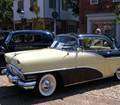
|
Dave:
I agree almost 100% with what you have asserted. Independents today (with the exception of Porsche) are generally low-number producers of exclusive, expensive cars. Those independents who tried to build and sell medium-priced higher-number production cars, such as DeLorean, exist for a short time and inevitably disappear. This was true in the past century as well, and that Packard, Studebaker, and a few other companies existed as long as they did was a tribute to their ability to adapt and their good overall management. While often criticized by some for branching out from its expensive luxury offerings, I believe Packard's offerings of the 120 and later 110 "junior" cars re-energized the company, brought middle-income buyers into its dealerships, and bolstered the company at a time when those "uncompromising" luxury manufacturers such as Pierce-Arrow, Stutz, Duesenberg, etc. were closing their doors. The brilliant 1941 Clipper made Packard one of the most desirable automobiles available to the American public. But as I said previously, independence in the automotive industry -- with the exception of the hyper-expensive peripheral makes -- inevitably leads to extinction. I don't think the design of plant makes much difference to a company's longevity. World War II and the Korean War, along with the demands and income of the post-war buying public, doomed all the independents, no matter what their plants looked like or the genius of their managers. As I wrote several months ago, the time for the amalgamation of American Motors was not the 1950s but the 1920s, before companies like Ford and General Motors had a chance to become automotive dynamos able to crush their competition.
Posted on: 2014/5/15 8:17
|
|||
|
You can make a lot of really neat things from the parts left over after you rebuild your engine ...
|
||||
|
||||
|
Re: One Story Assembly Plant What If?
|
||||
|---|---|---|---|---|
|
Home away from home
|
Porsche is no longer independent - they are part of VAG (VW) , with whom they have long been closely associated.
Posted on: 2014/5/15 8:41
|
|||
|
||||

 (66.19 KB)
(66.19 KB)